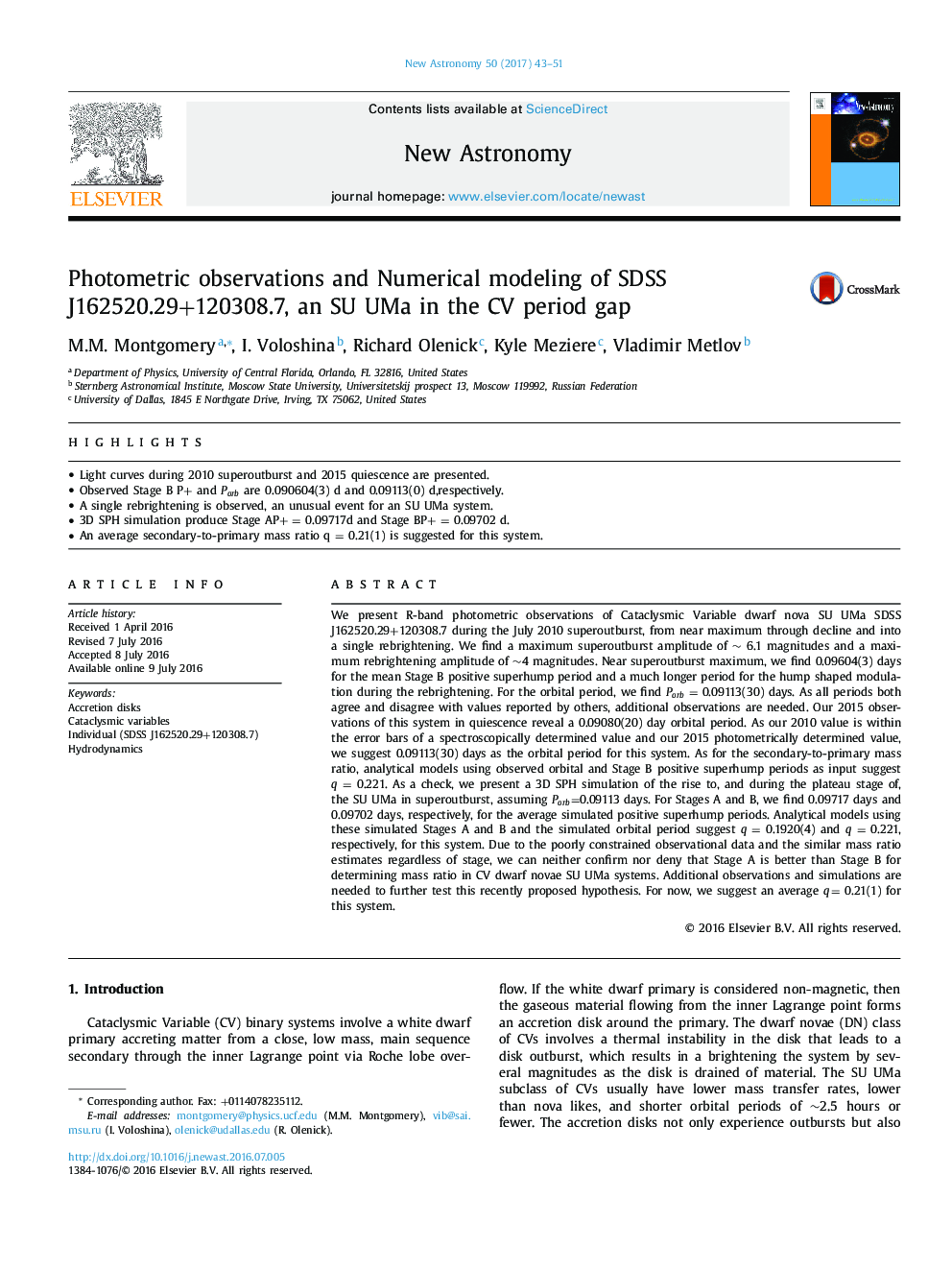| Article ID | Journal | Published Year | Pages | File Type |
|---|---|---|---|---|
| 1778693 | New Astronomy | 2017 | 9 Pages |
•Light curves during 2010 superoutburst and 2015 quiescence are presented.•Observed Stage B P+ and Porb are 0.090604(3) d and 0.09113(0) d,respectively.•A single rebrightening is observed, an unusual event for an SU UMa system.•3D SPH simulation produce Stage AP+ = 0.09717d and Stage BP+ = 0.09702 d.•An average secondary-to-primary mass ratio q = 0.21(1) is suggested for this system.
We present R-band photometric observations of Cataclysmic Variable dwarf nova SU UMa SDSS J162520.29+120308.7 during the July 2010 superoutburst, from near maximum through decline and into a single rebrightening. We find a maximum superoutburst amplitude of ∼ 6.1 magnitudes and a maximum rebrightening amplitude of ∼4 magnitudes. Near superoutburst maximum, we find 0.09604(3) days for the mean Stage B positive superhump period and a much longer period for the hump shaped modulation during the rebrightening. For the orbital period, we find Porb = 0.09113(30) days. As all periods both agree and disagree with values reported by others, additional observations are needed. Our 2015 observations of this system in quiescence reveal a 0.09080(20) day orbital period. As our 2010 value is within the error bars of a spectroscopically determined value and our 2015 photometrically determined value, we suggest 0.09113(30) days as the orbital period for this system. As for the secondary-to-primary mass ratio, analytical models using observed orbital and Stage B positive superhump periods as input suggest q = 0.221. As a check, we present a 3D SPH simulation of the rise to, and during the plateau stage of, the SU UMa in superoutburst, assuming Porb=0.09113 days. For Stages A and B, we find 0.09717 days and 0.09702 days, respectively, for the average simulated positive superhump periods. Analytical models using these simulated Stages A and B and the simulated orbital period suggest q = 0.1920(4) and q = 0.221, respectively, for this system. Due to the poorly constrained observational data and the similar mass ratio estimates regardless of stage, we can neither confirm nor deny that Stage A is better than Stage B for determining mass ratio in CV dwarf novae SU UMa systems. Additional observations and simulations are needed to further test this recently proposed hypothesis. For now, we suggest an average q = 0.21(1) for this system.
